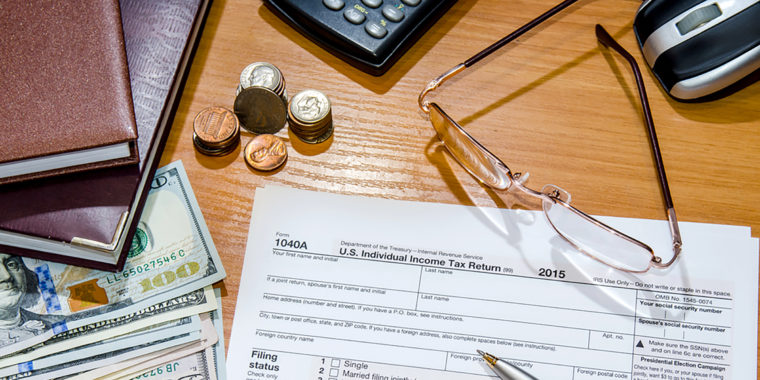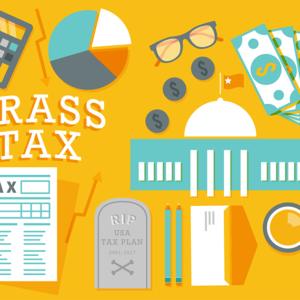The W-2s are arriving, and taxpayers are preparing to file their 2017 federal income taxes. For low- and moderate-income taxpayers, the possibility of a modest windfall looms: Will they receive a refund?
For these taxpayers, 80 percent of the time, the answer will be yes. So what happens next is key. Will taxpayers immediately absorb their tax refund into short-term expenses? Or can they be persuaded to save it for more long-term needs or as a rainy-day fund?
In a research paper set for publication in the next issue of the journal Behavioral Science & Policy, a team of researchers, including two from Washington University in St. Louis, demonstrated that — by structuring the messaging in the right way — those taxpayers can be encouraged to save their returns for long-term needs or unforeseen emergencies. In two separate experiments, they found one way of stimulating savings of nearly $500 on a $1,000 refund… and savings of some $300 more than the control group studied.

The team — consisting of faculty from Olin Business School, the Brown School, the University of North Carolina at Chapel Hill, and Duke University — worked with a collection of nearly 650,000 online tax filers to determine what interventions might effectively guide taxpayers to save their returns.
The study was part of the Refund to Savings Initiative, a collaboration between Washington University, Duke University and Intuit, Inc., the makers of TurboTax.
“Low income individuals usually have pressing financial needs for whatever refund they can get,” said Cynthia Cryder, associate professor of marketing at Olin. “That means it is quite a challenge to design interventions that move the needle on savings outcomes.”
The research is particularly topical now, as taxpayers gear up to file their 2017 taxes. It also comes in the shadow of tax reform legislation recently passed in Congress and signed by President Donald Trump.
“High-income households really benefit greatly from the current tax code, where they get large subsidies for mortgage interest deductions, retirement accounts and other benefits,” said Michal Grinstein-Weiss, professor and associate dean for policy initiatives at the Brown School. Meanwhile, “lower-income households received very modest subsidies in the tax code,” she said.

Through the Refund to Savings Initiative, the team partnered with Intuit over the past five years to target millions of qualified users of Intuit’s free online income tax filing program, TurboTax Freedom Edition, as they filed their taxes. In their 2015 experiment, the researchers used behavioral economics techniques and varied the messaging that almost 650,000 taxpayers received when asked how their tax returns should be handled.
In some cases, the researchers varied the choice layout that taxpayers viewed for handling a tax return — the “architecture” of the choices. For some taxpayers, the “choice architecture” might have been very basic: Send a paper check, direct deposit to a bank account (which could include a savings account), or split the refund into multiple accounts.
For other taxpayers, however, the architecture mentioned savings more directly, specifically asking whether the refund should go to a savings account, or offering to help to create a savings account.
In other treatments within the field experiment, researchers varied the nature of the messages that taxpayers received, suggesting future uses for their returns such as retirement, emergency funds, car purchases or education.
As it turns out, every intervention the researchers tested resulted in more savings versus the control group, which received no interventions. In one intervention, for example, where savings was made salient both via choice layout and messaging, taxpayers saved nearly $84 per person more on average than the control group.
“What is important about this study is that an intervention of a few seconds can lead to a large impact,” Grinstein-Weiss said.
In a second experiment, a small number of consumers considered a hypothetical $1,000 refund and offered different options, including a recommendation to save for an emergency “rainy-day” fund. The results showed taxpayers would have saved an average of $486 per person — about $307 more than the control group.
A third experiment also addressed a smaller subset of consumers with another hypothetical $1,000 tax return, testing a variety of strategies for emphasizing “saving” as an option. “Heavily emphasizing ‘saving’ or making ‘saving’ a simple one-click decision both increased savings,” the researchers wrote. “Simply making ‘saving’ explicit among (the choices) was not sufficient to increase savings deposits.”
Cryder said their research is continuing with data from 2016 tax filers and will again with people who file their 2017 taxes.
The current research “is suggestive, but not conclusive, of the benefits of highlighting savings,” Cryder said. “We know that people not having short-term savings is incredibly stressful, and these interventions increased short-term savings. What we don’t know for sure is whether it actually decreased financial stress.”
The next steps in the research will look at what outside forces might influence decisions low- to moderate-income taxpayers make when dealing with their returns. “What is the best use of money for people using their tax income in terms of financial well-being and overall stress?” Cryder asked. “How can we encourage them to do that with their money?”
Grinstein-Weiss agreed, noting that clearing debt may, in some cases, be the best use of tax savings — and that’s likely the key question researchers will tackle in the next tax season’s research.
“It was encouraging that you can get so many people to save at tax time,” Grinstein-Weiss said. “It makes me feel like more of these companies should do things like this and encourage people to save.”

